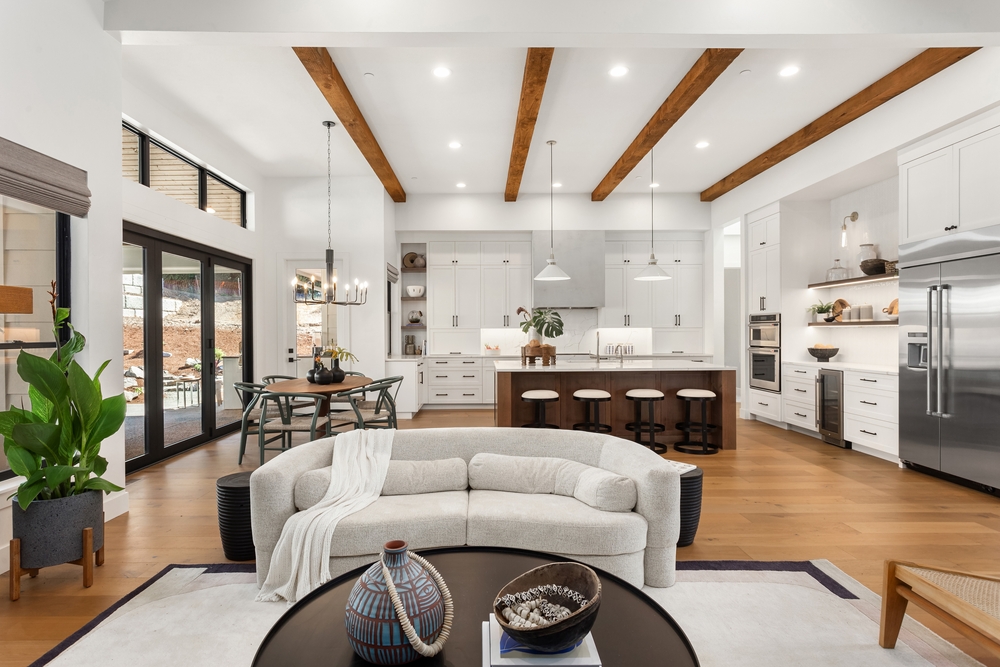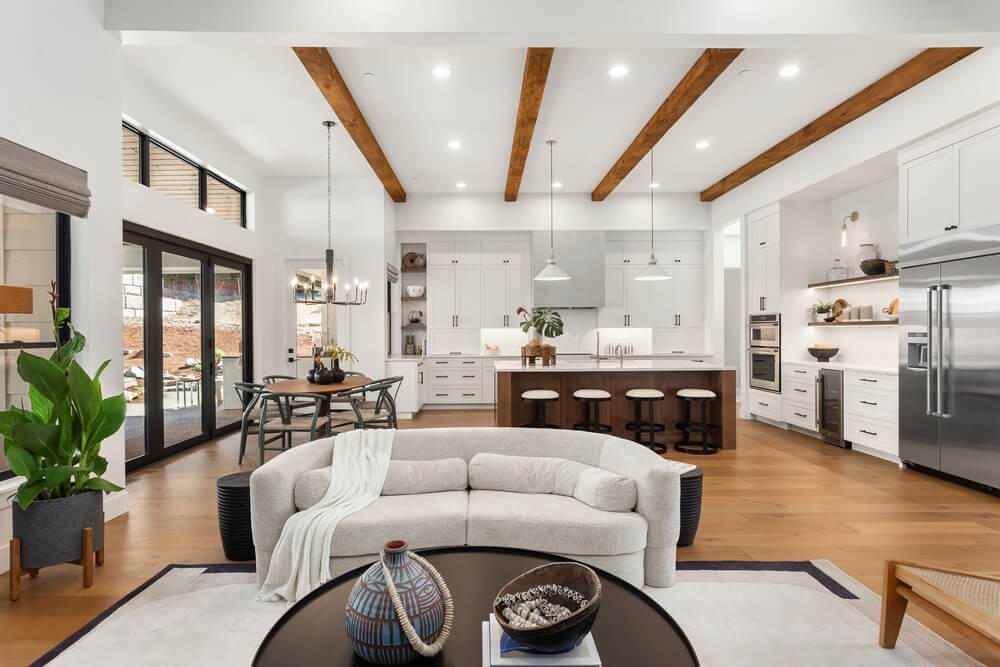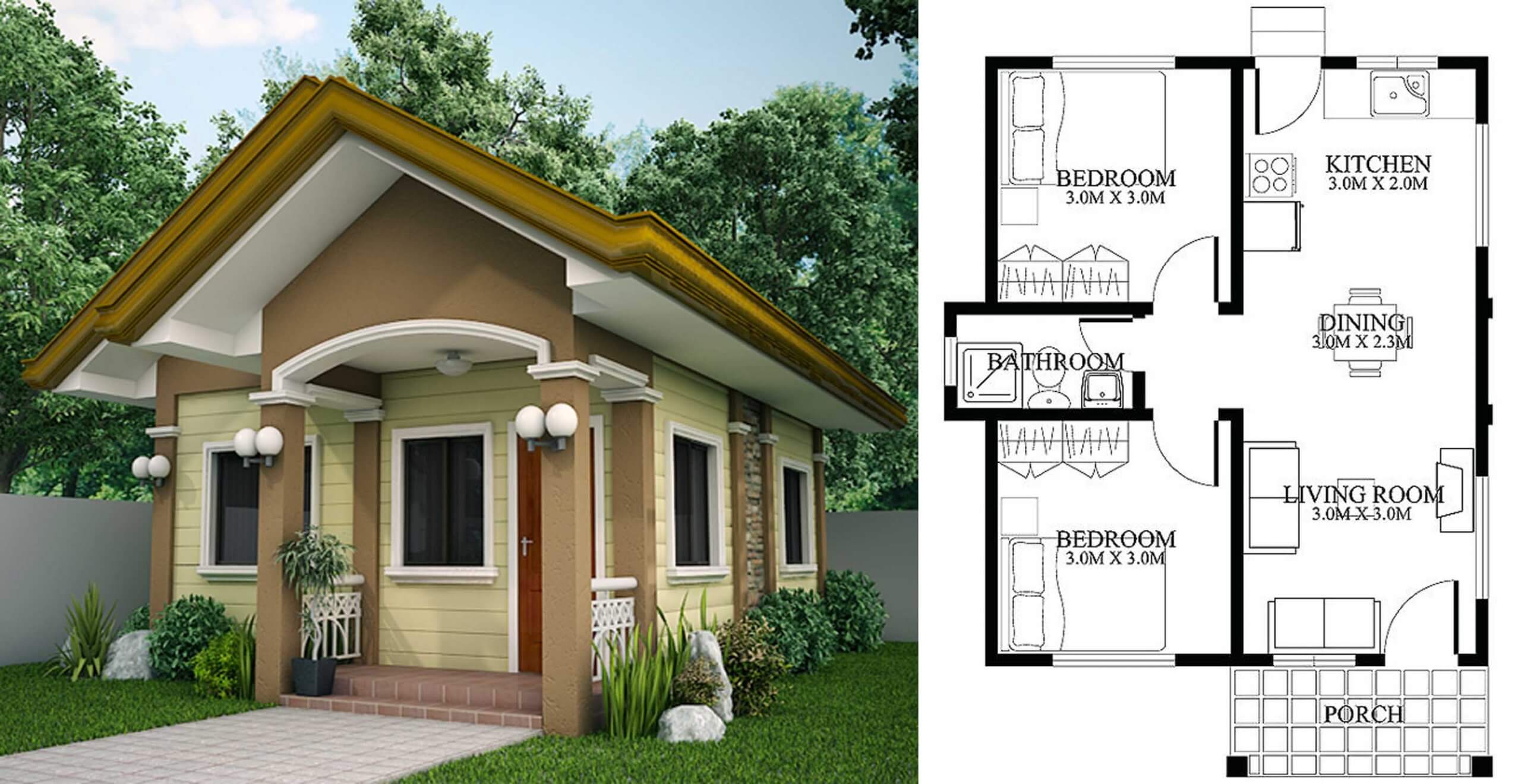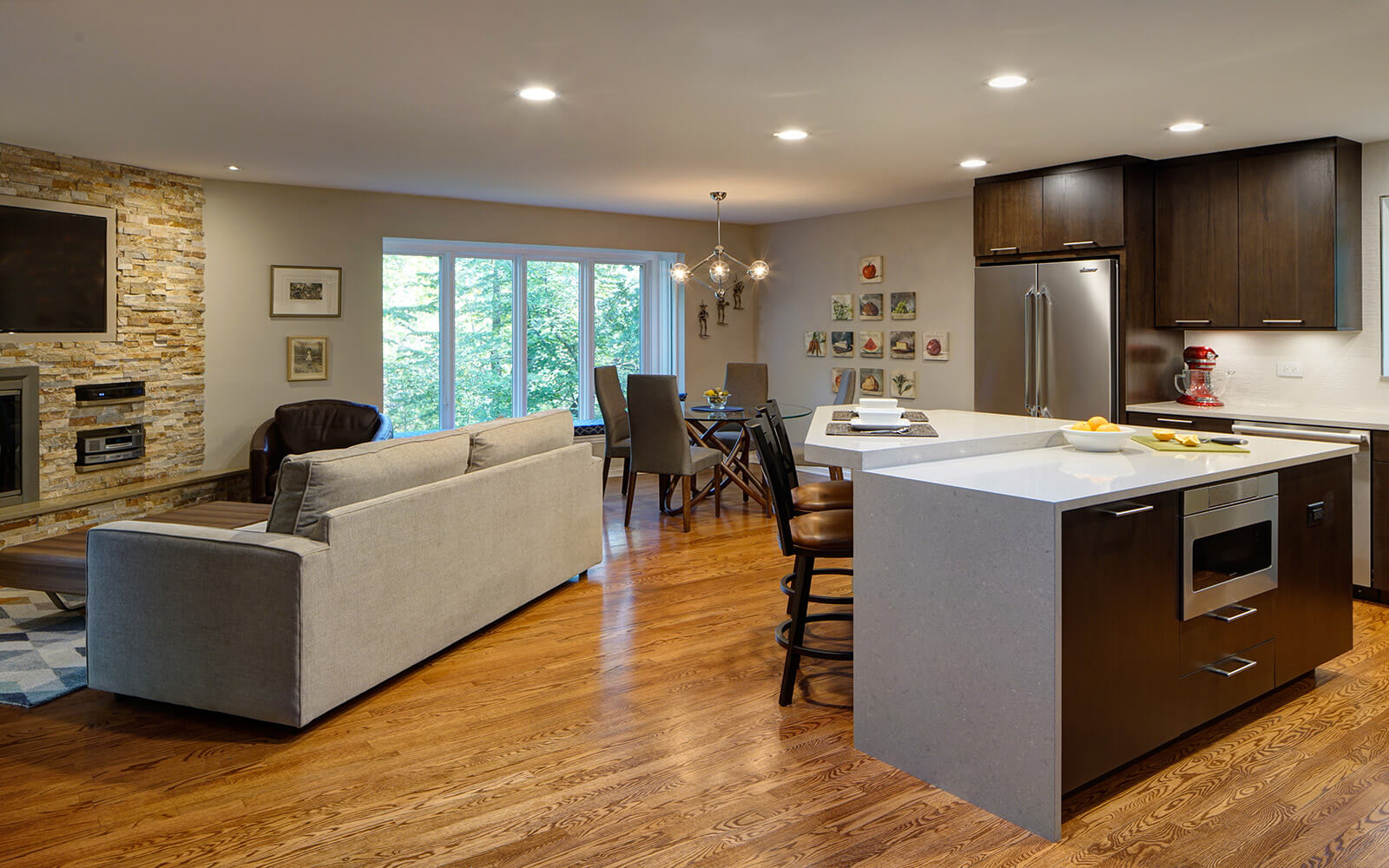Kitchen & Living Room: One Epic Space, Endless Possibilities

Kitchen & Living Room: One Epic Space, Endless Possibilities
The heart of a home, once confined to separate rooms, is now evolving into a dynamic, interconnected space. The open-concept living room kitchen design, a trend gaining momentum, has redefined how we live, cook, and entertain. This fusion of functionality and style offers an array of advantages and challenges, demanding careful consideration to achieve a harmonious and inspiring environment.
The Appeal of the Open Concept:

The allure of the open-concept living room kitchen lies in its ability to transform the mundane into the extraordinary. It's about creating a seamless flow between spaces, encouraging interaction and fostering a sense of togetherness. Here's why this layout is captivating homeowners:
- Enhanced Social Interaction: By eliminating physical barriers, the open concept fosters a more social and inviting atmosphere. It encourages conversation during meal preparation, facilitates shared cooking experiences, and allows for natural interaction between family members and guests.
- Expanded Space Illusion: The open plan layout creates a sense of spaciousness, especially in smaller homes. The removal of walls visually expands the area, making it feel more airy and welcoming.
- Natural Light Amplification: The open layout allows natural light to flow freely throughout the combined space, enhancing brightness and contributing to a sense of openness. This is particularly beneficial for homes with limited natural light sources.
- Modern Aesthetic: The open concept design embodies a modern and contemporary aesthetic, reflecting a desire for sleek, minimalist interiors.
The Design Challenges:

While the open-concept living room kitchen offers numerous benefits, it also presents unique design challenges that must be carefully addressed. These challenges stem from the need to balance the distinct functional needs of both spaces while maintaining a cohesive and aesthetically pleasing environment.
- Noise Control: The absence of walls can exacerbate noise levels, especially during cooking or lively gatherings. Effective noise control measures, such as strategic placement of appliances, acoustic panels, or sound-absorbing materials, become crucial.
- Smell Management: Cooking odors can easily permeate the entire living space in an open layout. Adequate ventilation systems, such as range hoods with high CFM ratings, are essential to effectively remove cooking odors.
- Visual Clutter Control: The open layout requires a conscious effort to maintain visual order. It's important to carefully consider storage solutions and decluttering strategies to prevent the combined space from appearing cluttered.
- Design Harmony: Achieving a visually cohesive and harmonious environment requires a thoughtful approach to color palettes, materials, furniture selection, and overall design aesthetics.
Planning Your Open Concept Space:

Creating a successful open-concept living room kitchen involves careful planning and a strategic approach. Consider these essential steps:
- Define Your Needs and Priorities: Before embarking on the design journey, clearly define your needs and priorities. Consider how you intend to use the space, your desired level of functionality, and your personal aesthetic preferences.
- Establish a Budget: Determine a realistic budget for your project, taking into account structural modifications, appliances, furniture, and finishing materials.
- Plan the Layout: Carefully plan the layout of your open concept space, ensuring adequate circulation, functional zones, and a natural flow between the living room and kitchen.
- Choose Materials and Finishes: Select materials and finishes that complement your design style, consider durability, maintenance requirements, and overall aesthetic appeal.
- Optimize Storage: Implement smart storage solutions to maximize space utilization and maintain order. Consider open shelving, cabinet systems, and strategic placement of appliances.
- Maximize Natural Light: Utilize windows, skylights, or strategically placed mirrors to amplify natural light, enhancing the sense of spaciousness.
- Consider Lighting: Incorporate a combination of ambient, task, and accent lighting to illuminate the space effectively and create different moods.
- Add Personal Touches: Incorporate personal touches and decor elements that reflect your style and personality.
Tips for Creating Harmony:

Creating a harmonious and visually appealing open concept space requires a thoughtful approach to design elements:
- Color Palette: Choose a cohesive color palette that flows seamlessly between the living room and kitchen. Consider using complementary colors or shades of the same color to unify the space.
- Material Selection: Opt for consistent materials across the open concept space to create a cohesive look. Use similar flooring materials, countertops, or cabinet finishes to create a sense of flow.
- Furniture Selection: Select furniture that complements both the living room and kitchen areas. Consider furniture with a multi-functional purpose, such as a sofa bed or a kitchen island that doubles as a dining table.
- Focal Point: Create a focal point in the open concept space to draw attention and define the overall design aesthetic. A statement fireplace, an impressive kitchen island, or a striking piece of artwork can serve as a focal point.
Maintenance and Functionality:
While the open-concept living room kitchen offers numerous benefits, it also requires ongoing maintenance and a focus on functionality. Consider these aspects:
- Cleaning and Maintenance: With a combined space, cleaning and maintenance become more important. Develop a cleaning schedule and ensure you have adequate cleaning supplies to keep the space tidy and sanitary.
- Ventilation: Invest in a high-quality ventilation system to effectively remove cooking odors and maintain air quality.
- Storage Solutions: Implement smart storage solutions to maximize space utilization and maintain order. Utilize cabinet systems, drawers, open shelving, and strategic placement of appliances to minimize clutter.
- Furniture Arrangement: Consider furniture arrangement that facilitates circulation, maximizes space utilization, and promotes a sense of flow.
The Future of Open Concept:


The open-concept living room kitchen design trend continues to evolve, with innovative approaches and new technological advancements shaping the future of this concept. Here are some emerging trends to watch:
- Smart Home Integration: Integrating smart home technologies, such as voice-activated appliances and automated lighting systems, will enhance the functionality and convenience of open concept spaces.
- Sustainable Materials: The use of sustainable and eco-friendly materials, like recycled wood, bamboo, and recycled glass, will become increasingly prevalent in open concept kitchens.
- Flexible Layouts: Open concept spaces will embrace flexible layouts with movable furniture and partitions, allowing for adaptability and personalization.
- Multi-functional Spaces: The open concept concept will extend beyond kitchens and living rooms, encompassing multi-functional areas that serve as home offices, playrooms, or entertainment zones.

Conclusion:

The open-concept living room kitchen design is more than just a trend; it's a testament to our evolving lifestyles and our desire for connected spaces that foster interaction and inspire creativity. By carefully considering design challenges, planning for functionality, and embracing modern trends, you can create an open concept space that reflects your personal style and enhances your daily living experience.
Kitchen & Living Room: Where Home Happens 🏡
The heart of any home, the place where memories are made, and where life unfolds – it's often the kitchen and living room that hold this special significance. These two spaces, when thoughtfully designed and seamlessly integrated, become more than just rooms – they become the very essence of home.
This article explores the fascinating world of kitchen and living room combinations, delving into the design principles, the practical considerations, and the unique benefits that come with creating a cohesive and inviting space.
The Rise of Open-Plan Living
Gone are the days of rigidly separated rooms. The modern home embraces open-plan living, blurring the lines between the kitchen, dining, and living areas. This trend has emerged for several reasons:
- Enhanced Flow: Open-plan layouts promote a natural flow of movement, fostering a sense of connectedness and ease within the home.
- Increased Socialization: By breaking down walls, these spaces encourage interaction and conversation, making it easier to entertain guests and connect with family.
- Maximizing Space: Open floor plans create the illusion of larger spaces, especially beneficial for smaller homes.
- Light and Airiness: Eliminating walls allows natural light to flood the entire area, creating a bright and airy atmosphere.
Designing a Cohesive Kitchen & Living Room
Creating a successful kitchen and living room combination requires thoughtful planning and a keen eye for design. Here are some key elements to consider:
1. Defining the Zones:
- Kitchen: The kitchen area should be clearly defined, typically by incorporating a kitchen island, a peninsula, or a breakfast bar. These elements serve as both practical work surfaces and visual dividers.
- Living Room: The living room should feel like a separate yet connected space. Consider using rugs, furniture placement, and lighting to create a distinct ambiance.
2. Flow and Functionality:

- Traffic Patterns: Plan the layout to ensure easy movement between the kitchen and living room. Avoid creating bottlenecks or congested areas.
- Work Triangles: In the kitchen, ensure the sink, stove, and refrigerator form a functional triangle, allowing for efficient movement while cooking.
- Storage: Sufficient storage is crucial in both areas. Consider open shelving, cabinets, and built-in storage to keep the space clutter-free.
3. Color and Texture:
- Color Palette: A cohesive color scheme is essential. Choose a neutral base for walls and floors and add pops of color through furniture, accessories, and artwork.
- Texture: Play with textures to create visual interest. Consider incorporating natural materials like wood, stone, and leather, combined with softer elements like textiles and rugs.

4. Lighting:
- Natural Light: Maximize natural light by choosing windows that allow ample sunlight to enter both spaces.
- Artificial Light: Use a combination of ambient lighting (for overall illumination), task lighting (for focused areas like the kitchen countertops), and accent lighting (to highlight features or artwork).
5. Furniture Selection:

- Multi-functional Furniture: Choose pieces that serve multiple purposes. For instance, a sectional sofa can create a comfortable seating area while also providing additional storage.
- Scale and Proportion: Consider the size of the space when choosing furniture. Avoid overcrowding the area with too many pieces.
- Style Consistency: Maintain a consistent style throughout both spaces. If the kitchen features modern elements, ensure the living room complements this style.
6. Finishing Touches:
- Accessories: Add personality to the space with pillows, throws, artwork, plants, and decorative items. These finishing touches create a warm and inviting atmosphere.
- Curtains or Blinds: Choose window treatments that complement the style of the room while offering privacy and light control.

The Benefits of a Combined Kitchen & Living Room
Beyond aesthetics, there are several practical and emotional benefits to combining the kitchen and living room:
- Enhanced Family Interaction: This space promotes family togetherness, allowing for cooking, dining, and relaxing all in one area.
- Improved Socializing: Open layouts are perfect for hosting parties and gatherings, creating a more welcoming and inviting atmosphere for guests.
- Increased Efficiency: With the kitchen and living room connected, it becomes easier to prepare meals while entertaining or keeping an eye on children.
- Flexibility and Functionality: This space can be easily adapted to different needs, transforming into a cozy reading nook, a family game zone, or a work-from-home office.

Practical Considerations
While kitchen and living room combinations offer many benefits, it's important to consider practical considerations:
- Noise Levels: Be aware of potential noise from the kitchen, especially if the family enjoys cooking or entertaining frequently.
- Kitchen Odors: Ensure proper ventilation to minimize cooking odors from permeating the living area.
- Cleaning and Maintenance: An open-plan layout requires more frequent cleaning to maintain a tidy and presentable space.

Kitchen & Living Room Design Ideas
1. Modern Minimalism:
- Embrace sleek lines and clean surfaces with white cabinets, stainless steel appliances, and minimalist furniture.
- Incorporate natural materials like wood and stone to add warmth and texture.
- Keep the color palette simple, using white, gray, and black as the primary tones.

2. Rustic Chic:
- Create a cozy and inviting atmosphere with distressed wood cabinets, exposed brick, and antique furniture.
- Incorporate natural elements like wood beams, stone fireplaces, and woven textiles.
- Choose a color palette that incorporates warm browns, creams, and blues.
3. Mediterranean Flair:
- Bring the warmth of the Mediterranean to your home with whitewashed walls, terracotta tiles, and wrought iron accents.
- Use natural materials like stone, wood, and wicker.
- Incorporate vibrant colors like blue, yellow, and green to create a cheerful and inviting atmosphere.
4. Industrial Chic:
- Create a modern and edgy space with exposed brick, metal accents, and reclaimed wood.
- Use a neutral color palette with accents of black, gray, and rusty orange.
- Incorporate vintage lighting fixtures and industrial-style furniture.

5. Contemporary Glamour:
- Embrace sleek and sophisticated design with high-gloss finishes, polished chrome, and luxurious fabrics.
- Use a palette of black, white, and metallic accents to create a glamorous and modern look.
- Incorporate statement pieces like a crystal chandelier or a contemporary art sculpture.
Conclusion

The kitchen and living room are the heart of any home, and their combination offers a unique opportunity to create a space that reflects your personality, style, and lifestyle. By thoughtfully planning the design, considering practical elements, and embracing a cohesive approach, you can create a space that is not only functional but also beautiful, inviting, and truly embodies the essence of home. 🏡.


